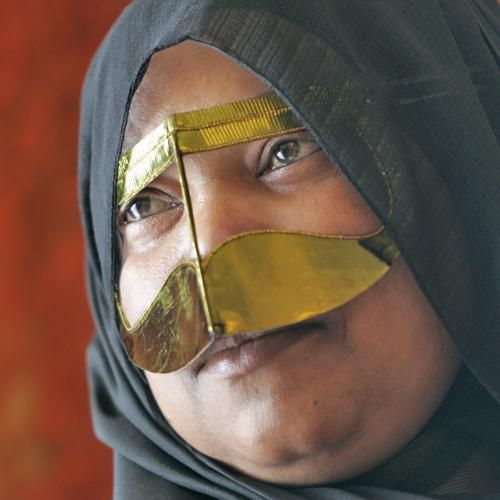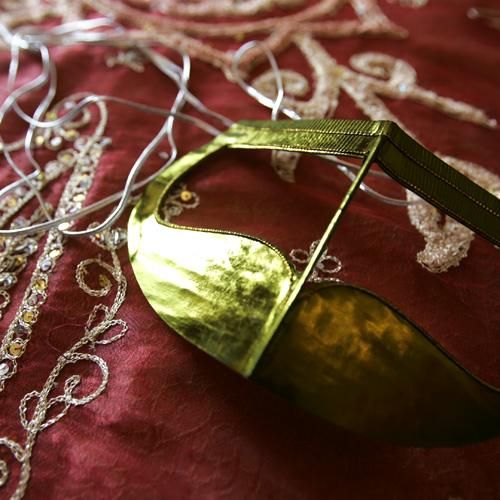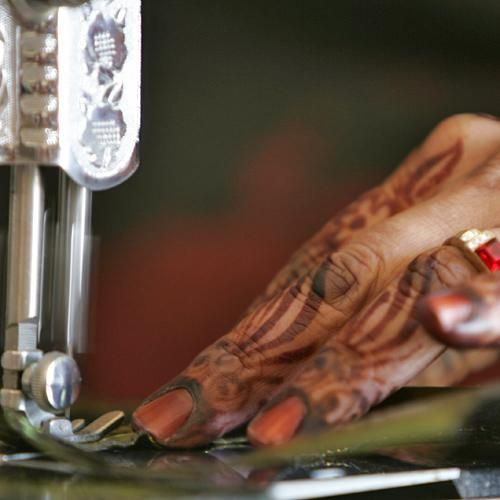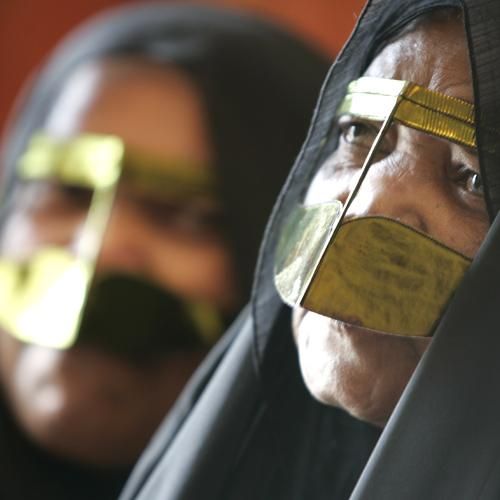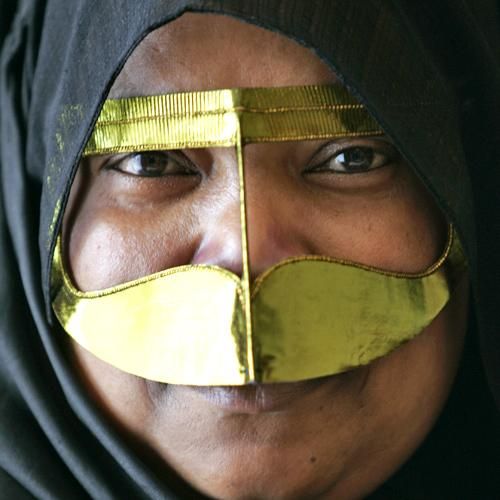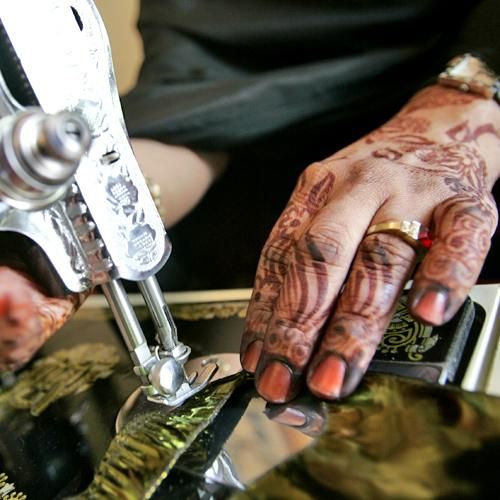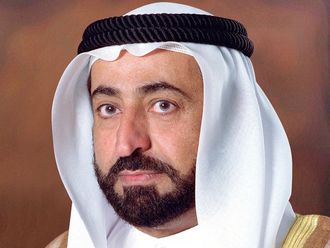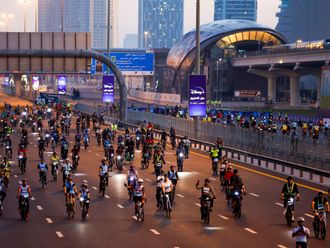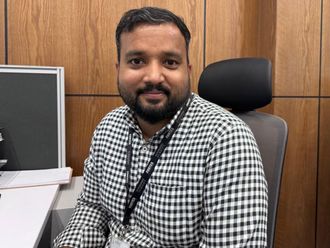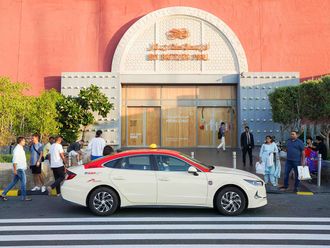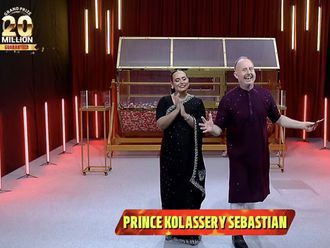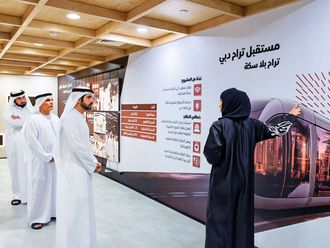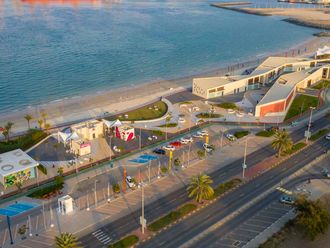Thirty years ago, it was very rare to see an Emirati woman not wearing a burqa in public, now it's a fast-disappearing custom.
Not to be confused with the head-to-toe cover used in Afghanistan, the Gulf burqa (pronounced burga in the local dialect) is a traditional metallic-coloured embroidered cloth used to cover part of the face, and, these days, is only used by the older generation.
Upon first seeing it, most people mistakenly think that it is made of gold or some other metal.
It is actually made from cloth imported from India. The cloth is dyed blue or purple and then rubbed down with a ball of glass until it gets that shiny metallic finish.
The design of the burqa is meant to mimic the features of the falcon, a symbol of grace, pride and strength.
“Back then, young girls were told to wear a burqa when they reached puberty or after they get married,'' says Aisha Umm Hassan, one of the few remaining burqa makers.
“I started wearing it after I got married. I wasn't told to, I just did it because it was a sign of womanhood to me; I wanted to be like my mother and grandmother.''
The trade has been handed down from generation to generation.
Aisha learnt burqa making from her grandmother Zainab more than 30 years ago.
“Women had many talents in those days; my mother was and still is a very skilled seamstress, making gowns for herself and her household. She learnt it from her mother but didn't pick up burqa making; luckily it was passed on to me.''
Burqa makers seldom do it for profit anymore.
“I make them on demand, if someone asks me I'll make some for them, but other wise there is no market for it. There are still people out there who wear it and need it."
Some women will wear a new burqa everyday while others may wear the same one for a week or two, Aisha explains.
She estimates that less than 1,000 women in the UAE wear burqas these days. “You will find most of then in Jumeirah and Satwa.''
“I usually use a sewing machine to make them, it comes out neater that way,'' she says. Aisha also inherited some of her grandmother's customers.
“The older generation still prefers the hand-made ones so I make those as well.''
Hand-made ones sell for Dh20 while machine-made are priced only Dh15.
“Some shops sell 10 burqas for Dh100, but those are very cheap quality.''
Aisha can make 10 hand-made burqas a day.
“There are many types of cloth available in the market, like Kraip, Cheet, Chinese, Kamry and Nile – because it's blue.''
Aisha likes to use the Chinese (even though it comes from Mumbai) cloth saying that she finds it to be the best quality cloth. It costs about Dh1,000 per roll.
Describing her craft, she said: “First I use a piece of crayon to mark the eye slits depending on the customers' request. Then I cut out the eye slits and sew the seams, forming a sleeve in the middle. Then I carefully make small folds in the burqa to form the ruffled top.
“The top corners are folded in to make a curved edge. I use an ice cream stick for the “Saif'' (sword in Arabic) which slides into the middle sleeve to hold the burqa straight. Matchstick-sized pieces of the Saif are inserted into the top corner folds to hold the form of the burqa.
“The “Shubug'' (the string used to tie the burqa) is sewn to the matchsticks. The older generation prefers the Shubug to be red, but these days, people use silver.
“I cover the inside of the burqa with masking tape to prevent the cloth from staining the face. I then cut the bottom of the burqa making a curved edge.
“My daughters are not interested in learning these things, maybe I can, like my grandmother, pass it on to their children instead.''
Aisha also makes traditional Emirati breads and pastries on request, “I make Rigag, Khameer, Chibab, and Khamfaroosh as well. Many people have forgotten these recipes but still crave a taste of the old days.''
Aisha can be reached through her son Jasem at 050 755 5520.
The different designs
“I make the Dubai design; they now call it the Zabeel Cut. It has a thin top and broad curved bottom,'' says Umm Hassan. “The Al Ain design has a thin top and thin bottom. Women here don't seem to like it they say it looks too much like a mustache.''
“The Sharjah design looks like ours but they make the sword in a way that the top of the burqa leans forward,'' she explains. “The Bahraini and Qatari burqa is square-shaped, they don't cut and curve the edges of the eye slits like we do.''
Umm Hassan finds the Omani burqa (also worn in Fujairah) the strangest of the lot. “It's a bit scary to me. The burqa is very large and looks as if it's worn inverted with the broader side on top. The Saif is also quite large and its tip rises above the forehead.'' She added, “Saudis wear the Niqab which is totally different from the burqa.''
Numerous Designs
Zabeel Cut: Commonly worn in Dubai, it has a thin top and broad curved bottom
Al Ain design: Has a thin top and thin bottom
Sharjah design: Looks like the Zabeel Cut but is made so the top of the burqa leans forward
Bahraini and Qatari burqa: Square-shaped, they don't cut and curve the edges of the eye slits
Omani burqa: Also worn in Fujairah, this burqa is very large and is worn with the broader side on top. The top is also quite large and its tip rises above the forehead


